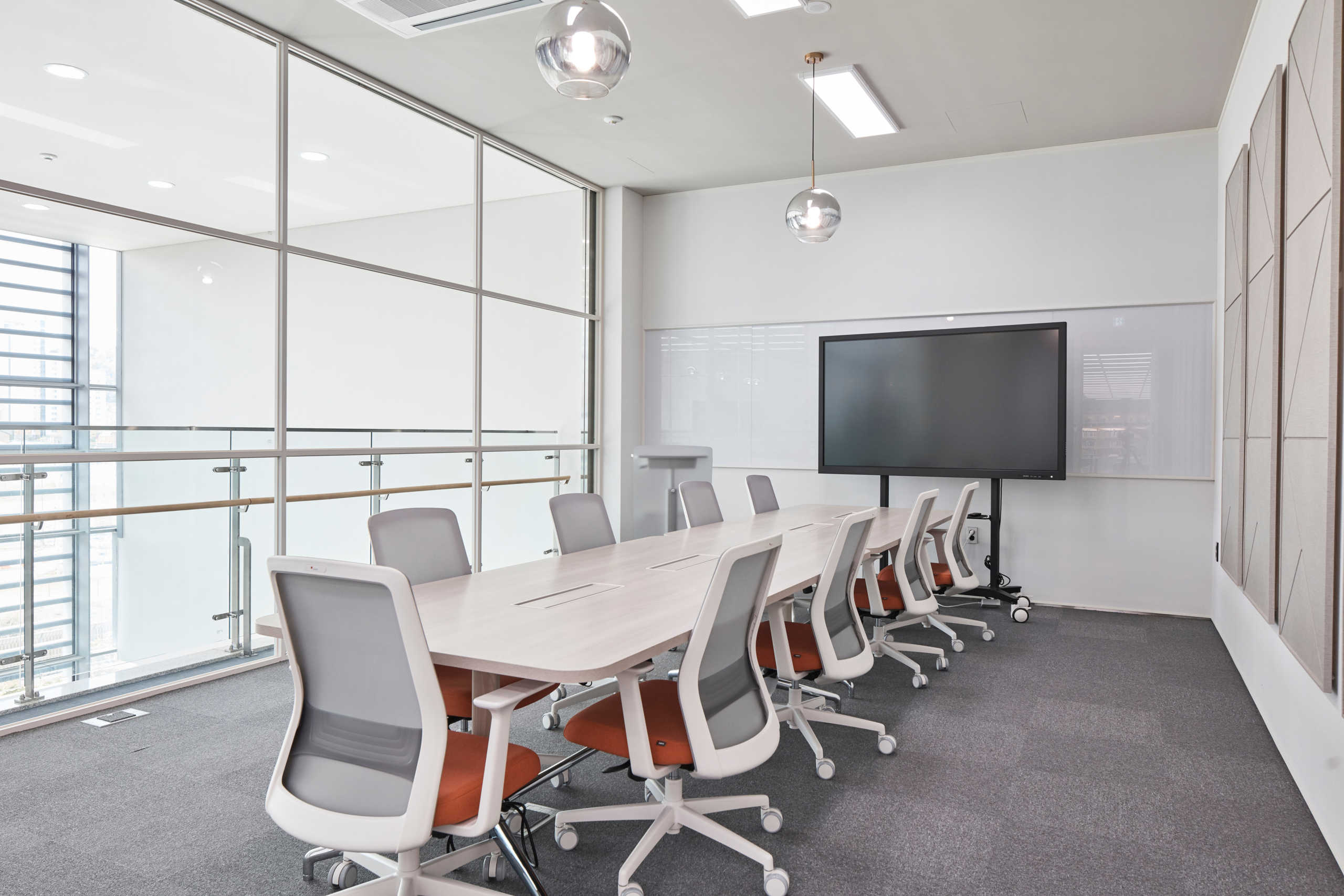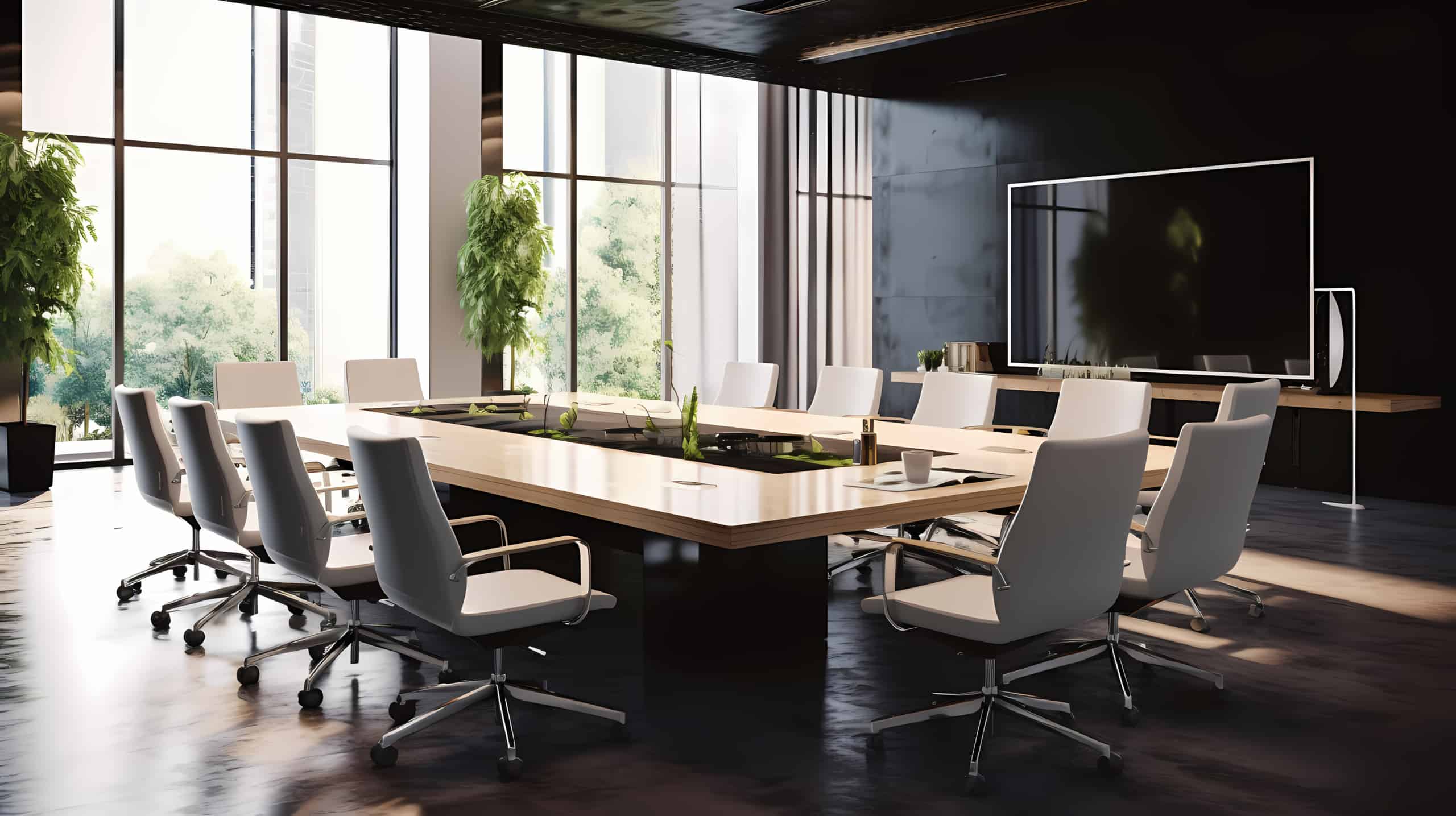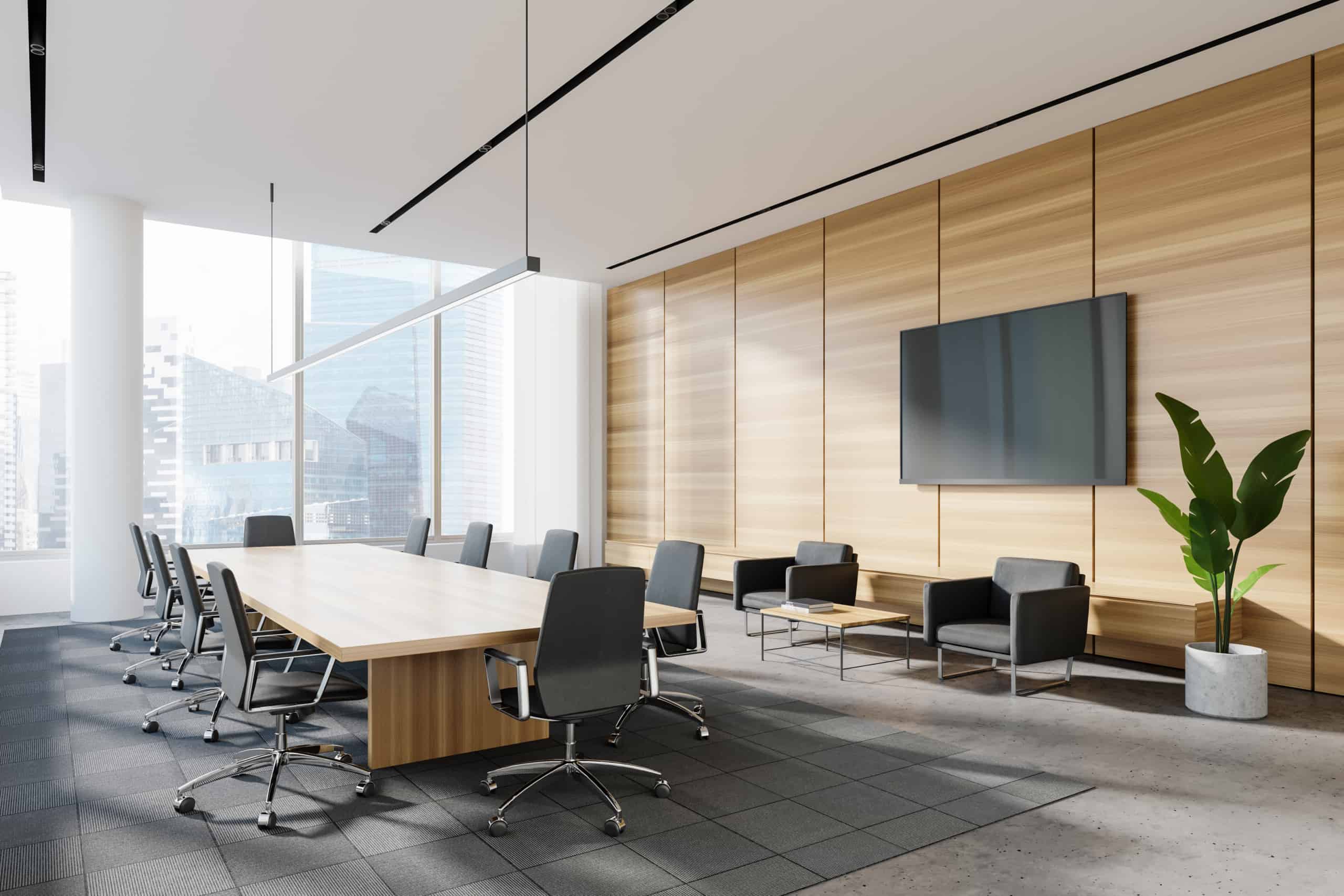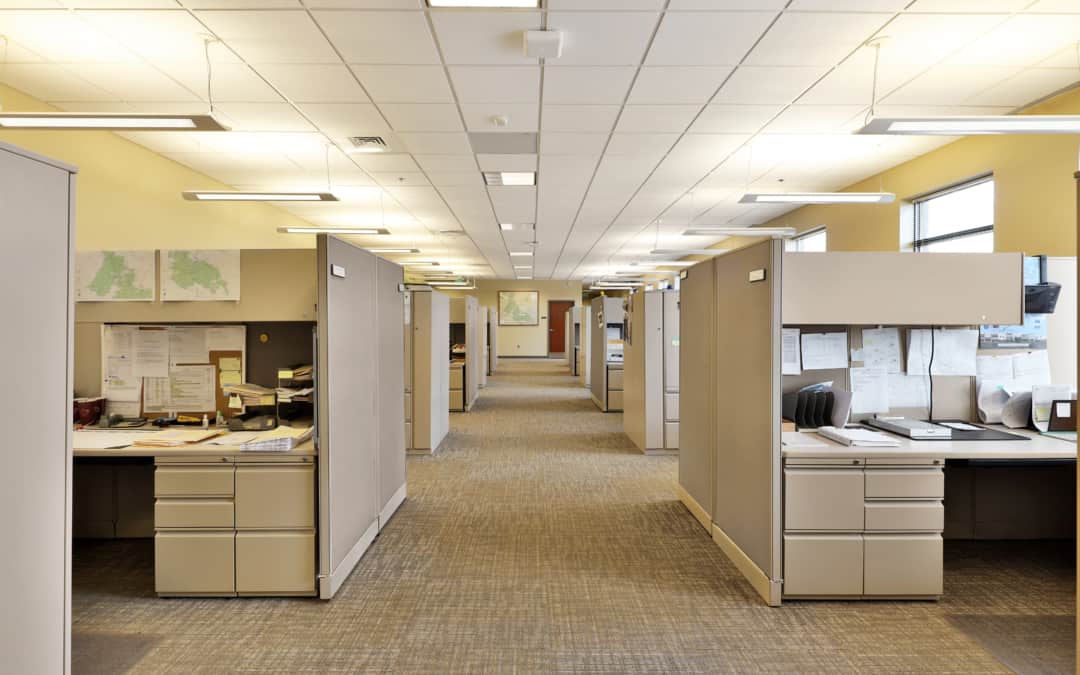A good conference room is characterized by key features that contribute to its functionality and effectiveness. Here are some factors that can create an effective and attractive conference room:

1. Sufficient Space: The room should be spacious enough to accommodate all attendees comfortably. It should have suitable seating arrangements, with ample space for people to move around and interact without feeling cramped.
2. Audio-Visual Equipment: A good conference room is equipped with modern audio-visual tools, such as a high-quality projector, screens, speakers, and microphones. These tools enable effective presentations and video conferences, prioritizing audio clarity and ensuring that everyone can hear and see clearly.
3. Technology Integration: Technology integration is crucial in a conference room. The room should have reliable Wi-Fi connectivity, power outlets, and charging stations for electronic devices. Video-conferencing capabilities, whiteboards, and interactive displays can enhance collaboration and productivity.
4. Adequate Connectivity: Power outlets and data ports should be conveniently accessible to participants who need to charge their devices and connect laptops or other equipment. Access to multimedia connectivity options (HDMI, VGA, USB) enables seamless presentations and collaboration.

5. Lighting and Acoustics: Proper lighting is important in creating a comfortable and professional atmosphere. Natural lighting is preferred, but adjustable artificial lighting should also be available. Acoustics play a vital role in ensuring clear communication; the room should be designed to minimize echoes and interference from external noise.
6. Comfortable Furniture: Ergonomic chairs and tables contribute to the overall comfort of attendees during long meetings or conferences. It is essential to have furniture that promotes good posture and allows for extended periods of sitting without discomfort.
7. Environmental Control: Temperature control is essential in maintaining a comfortable environment in the conference room. Proper ventilation and the ability to adjust the temperature ensure that attendees can focus on the meeting without distractions caused by extreme heat or cold.

8. Privacy and Security: Confidential discussions may occur, and sensitive information may be shared, during meetings. A good conference room should have measures in place that ensure privacy, such as soundproofing and secure access controls.
9. Accessibility and Inclusivity: The conference room should be designed to accommodate individuals with disabilities, offering wheelchair accessibility, Braille signage, and hearing-assistance systems. The space should be inclusive and considerate of the diverse needs of all who enter.
10. Aesthetics and Professionalism: The aesthetics of the conference room should create a professional atmosphere that is conducive to meetings. The use of appropriate colors, decor, and branding can enhance the overall experience and leave a positive impression.
When these factors are considered in its planning and design, a conference room can facilitate effective communication, collaboration, and productivity, resulting in successful meetings and events.


